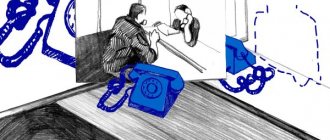homelach 07/04/201707/04/2017 Category Miscellaneous Comment.
The number of prisoners in US prisons is enormous and exceeds all imaginable limits. About two million people are in prison in the “freest country in the world.” At the same time, in China, which has a population five times larger than the United States, one and a half million convicts are imprisoned. In terms of the number of prisoners per 100,000 population, the United States (738/100,000) is firmly ranked first in the world. Many of them are also subjected to sexual violence in places of detention.
Human rights activists and scientists are sounding the alarm. The former are more interested in abstract concepts, while the latter are more interested in very real facts. Thus, the prevalence of AIDS among prisoners is eight times higher than the national average. 95% of prisoners will sooner or later gain freedom and carry their illness into the society that tried to isolate itself from them. There are demands for the provision of condoms to prisoners. This clearly shows that the authorities consider the fight against sexual violence in prison to have little prospects. And they hope to at least reduce the level of sexually transmitted diseases.
There is a fairly widespread opinion among American society that there is no point in feeling sorry for prisoners, since they are criminals. However, statistics show that people convicted of minor offenses and sentenced to short terms are the first to be raped.
Sexual violence has overwhelmed absolutely all US prisons, regardless of the gender of the prisoners. Human rights activists believe that at least 300,000 rapes of men alone occur within the penitentiary system per year. While the number of rapes in general in freedom does not exceed 135,000.
See also: A dangerous passenger hijacked a plane, received a ransom and disappeared into the skies
"Lesbian play" in American women's prisons is complemented by the widespread practice of rape by guards. The management of most prisons believes that the practice of sexual violence allows for closer control over convicts and, accordingly, is useful. Therefore, it is not surprising that cases of criminal cases of rape against prison officers are rare, and there are practically no cases of conviction at all.
Monica Washington, who was serving her sentence at the notorious Tutwiler Women's Prison, says a guard took her to a private room and ordered her to perform sexual service on her. Monica tried to refuse, and even threatened to file a complaint. To this she received an unequivocal answer: “Who will they believe, you or me?” Now Monica's daughter, born in prison, lives with her brother. The father of the child continues to fulfill his official duties, and no one knows how many more such children he has.
“We have been aware of numerous cases of pregnancy at Tutwiler Prison since 2009,” Charlotte Morrison, a lawyer for the Equal Justice Initiative, told reporters. “Since the beginning of this year, there has not been a single case of violence that we could prove,” she continued.
See also: Photo story of Bangladeshi citizens working for $10 in hazardous work
“Each of the female prisoners we interviewed reported that they had either experienced sexual harassment or rape themselves, or had seen other prisoners being raped,” says prison spokeswoman Marydell Guevara.
The situation is no better in US men's prisons. Stefan Donaldson has become the first man to speak out about sexual abuse in prisons. Donaldson was imprisoned for a short time for participating in an unauthorized protest against bombing in Cambodia. In the first two days, according to Donaldson, he was raped at least sixty times. At the same time, he received such serious injuries that after his release he needed surgery. There he learned that he had been infected with AIDS. Complications from this disease soon led to his death.
However, with the practicality typical of Americans, Donaldson managed to publish several books, make good money from them and bask in the rays of “fame.” In his books, he talks about how the most reliable way to avoid mass and gang rape is the so-called “sticking”. Its essence boils down to the fact that from all the prisoners you should choose the most powerful and authoritative one, become his sexual slave and serve only one person. Donaldson willingly shares his methods for acquiring patrons among “real people.”
See also: The scariest computer games you should play with the lights on
The total epidemic of rape in all US prisons forced even the American Congress to address this problem. A special law “On Combating Rape in Prisons” was recently adopted. Now, according to American human rights activists: “The administration will not be able to pretend that this problem does not exist.” I would like to ask: “Is that all?”
source
If you find an error, please select a piece of text and press Ctrl+Enter.
BraveRobot found more articles on this topic:
- “Omitted” in women’s prisons: here’s what they do to them and why
- How do prisoners live in prisons in different countries?
- Who are called “devils” in Russian prisons?
- Who was most disliked in Soviet prisons: the hierarchy on the bunks
- Everyone should be tested for the AIDS virus
- “Omitted”: how this “suit” of prisoners appeared in a Russian prison
- Prison riddles: how and why they check newcomers in prison
- Kanye West is the world's highest paid singer (new Forbes ranking)
- How many years after the war did the population of the USSR recover?
- Which countries have the highest rates of mental illness?
Videos of mass rapes in Russian prisons have begun to be published online. Will the culprits be punished?
Photo: screenshot
Several videos from 40 gigabytes
The first three videos appeared online on October 5.
In a video message on the YouTube channel Gulagu.net, project manager Vladimir Osechkin says that they were filmed in the tuberculosis hospital of the Federal Penitentiary Service No. 1 in the city of Saratov. Osechkin says that the videos were provided by a programmer who had access to the official computers of the Federal Penitentiary Service for five years. The records, which include photos, videos and text materials, total about 40 GB. In one of the videos, a naked man is tied to a bed. A man in black clothes begins to rape him with a mop. The man shouts: “What are you doing? I have nothing fucking [damn] to say.” They cover his mouth with a hand. “Let’s remember, you bastard *****, ***** [fucking, damn]. You’ll be lying here for three days with [a mop] in your ass,” says one of the rapists. In the second video, a man lies on the floor with his hands bound with tape, and an unknown person urinates on him. Then another unknown person puts his foot on his back and asks: “Who are you in life?” The man replies that he is a “tramp.” A voice from off-screen interrupts: “Rooster.” In the third recording, a man is tied to a cot, his legs raised and secured with ropes. He is raped by an unknown person.
Several more videos were published on the Gulagu.net YouTube channel on October 6. In one of them, the arms of a naked man are stretched to the sides by two unknown men, and another one urinates on his head. The man tries to get up, but a voice from off-screen commands: “Get down, you creature!”
After the start of publication of Gulagu.net videos (the resource is blocked in Russia. - Ed.)
) reported a DDoS attack on his website. According to Osechkin, this is how he takes revenge for exposing the “secret methods of work” of the FSIN and the FSB. Osechkin said on the YouTube channel Gulagu.net that the “secret archive” with recordings of rapes was used by security forces to recruit prisoners under the threat of making these videos public and transferring them to the caste of the “lowered”.
Dismissals and Kremlin commentary
After the publication of videos with sexual harassment, Interfax reported that the head of the Saratov Federal Penitentiary Service, Alexey Fedotov, resigned. The head of the prison hospital and several other penitentiary system officials were also fired. To check the reliability of the personnel, the FSIN sent a group of employees to Saratov. On the evening of October 5, the investigative department of the Investigative Committee for the Saratov region opened a criminal case, but only in relation to the torture of “one convicted person,” the department’s website said. The case was initiated under the article “violent acts of a sexual nature committed by a group of persons by prior conspiracy.” On October 6, TASS reported four more criminal cases related to the publication of video recordings.
The videos that appeared online were commented on by presidential press secretary Dmitry Peskov. “If the authenticity of these materials is confirmed, then, of course, this is a reason for serious investigation. But first we need to quickly but calmly understand and establish the authenticity of these materials,” RIA Novosti quotes him as saying.
The most notorious cases of sexual torture in prisons
In 2009, a prisoner who received leave to visit his wife did not return to a colony in the Leningrad region on time. FSIN officers caught him, wrote insults on his chest, forced other prisoners to rape him, and then raped the fugitive themselves. Photos and videos of the torture were taken. All four security officials held high positions in the Federal Penitentiary Service. They received from 1.5 to 10 years in prison.
In 2013, in a colony in the Orenburg region, FSIN officers decided to teach a lesson to a prisoner who escaped due to threats of being raped. They took him into a closed room. While two prisoners held the fugitive by the hands, the third prisoner, at the direction of the FSIN officers, ran his genitals over his face and lips. Everything that happened was recorded on a video camera. The court rendered a verdict in the case only in 2022 - it sentenced the former head of the colony and his deputy to 7 and 5.5 years in prison. The ex-deputy chief was released on parole, wrote Mediazona*.
In 2014, a prisoner in one of the Nizhny Novgorod colonies was forced to confess to the crimes he was accused of. To obtain testimony, he was beaten by other prisoners, and then raped with a PR-73 rubber baton, which is used by FSIN officers; they also doused him with water from a hose, after which they shoved the hose into his anus. The Committee against Torture has now filed a complaint regarding the torture of a prisoner with the ECHR.
In the summer of 2022, the department of the Investigative Committee for the Kirov Region opened a criminal case on the fact that several employees of the Federal Penitentiary Service exceeded their official powers - they tortured and threatened to rape a prisoner, demanding the necessary testimony. A brush stained with feces was passed over the man's body. Convicts at IK-17, where torture took place, regularly complained of “torture with a soldering iron, rape with a mop and washing in the toilet,” Radio Liberty reported*.
This year, a Tuvan prisoner told Taiga.info about rapes in the Angarsk colony, where a riot occurred in 2022, where at least four prisoners who collaborated with the administration were involved in rapes. According to human rights activists, the investigation accuses them of causing violence “in the form of traumatic perforation of the rectum” and other organs. They raped the prisoner first with a bottle and then with a boiling pot.
Not all cases make it to court because those raped are afraid to complain
Vladimir Smirnov, a lawyer for the Committee against Torture, told Snob that not all cases of rape in penitentiary institutions become known to the general public. According to him, people who have been subjected to sexual violence in colonies are afraid to report it, since “the cases concern sexual integrity, and those who were raped are condemned by other prisoners.” The lawyer adds that prisoners regularly receive complaints of sexual violence, and this type of torture itself is usually used to “break the will” of a prisoner or to obtain the necessary testimony from him.
“Since there is such a fuss [around the publications of the “secret archive”], someone will definitely be punished,” Smirnov believes. — What surprised me: unlike the case in Yaroslavl colony No. 1 (videos of torture from it were also published online. — Ed.
), federal authorities began to take action immediately. No one rushed to find out where the leak came from first, as in Yaroslavl.”
Vladimir Osechkin said on the YouTube channel Gulagu.net that there are still thousands of videos in the “secret archive” of the security forces; the archive itself was taken out of Russia.
* The media is recognized by the Ministry of Justice as a foreign agent.
More texts about politics and society can be found in our telegram channel “Project “Snob” - Society”. Join us
"Rape as a method of torture." Sexual crimes in the war zone in Donbass
Every fourth person who was captured by separatists in the Donbass spoke about the facts of sexual violence, human rights activists report. And these are not all cases, since only a few agree to talk about it. Facts of sexual violence are also recorded in Kyiv-controlled territory.
Present Tense tells the stories of survivors of violence and humiliation in Donbass and explains why these crimes are practically not investigated in Ukraine.
“The prosecutor explained that this cannot be proven”
“They brought me to him. I began to be indignant, I said: “What kind of detention conditions are these? Are you even kidding me? It’s impossible to be there.” “Oh, is there something you don’t like? – called the guard. “Give her to our boys to be torn to pieces.” They took me to the cell in which they kept their drunken disciplinary officers, they gave off such a fume. They threw a pillow over my head, held my hands and raped me. I don't even remember their faces. I remember one thing: something bearded, unshaven, with terrible fumes.”
Forty-year-old Natalya (name changed) was detained in Donetsk in 2015 by armed people. She was accused of “spying for Ukraine.” They kept Natalya in the basement of the former SBU building in Donetsk. She was beaten, raped, and was not provided with the necessary medical care.
In the locker room you strip naked, wrap yourself in a towel and go to the bathhouse. The bath attendants there were men. We were embarrassed to go naked. So at least we had towels, but how many times have I seen absolutely naked girls scratching themselves, they don’t have these towels.”
Natalya says that she soon began to have mental problems: “I said: “What the fuck? Why me? Why? How can? If they don’t let me out of here, I’ll hang myself, I’m warning you. I’ll find any way, I’ll hang myself, but I won’t be here anymore, I can’t.”
Natalya spent two years in captivity of the separatists. After her release, she testified. However, the Ukrainian investigative authorities did not open a case under the article “Rape”. “As the prosecutor explained to me, this is simply unprovable,” she says.
Natalia’s story was documented by researchers from the Eastern Ukrainian Center for Public Initiatives. In 2022, they produced a special report of almost 300 interviews with women and men - one in four reported some form of sexual violence.
“First of all, these are people who were subjected to sexual violence in illegal places, who are not free (in the part of Donbass not controlled by Kiev). We are talking about rape, genital mutilation, public nudity, general restraint of men and women while they were forced to go to the toilet in each other's presence, rape of people in the presence of others, videotaping of rapes, threats to make these videos public, coercion of sexual intercourse with others captives, castration,” says the head of the Eastern Ukrainian Center for Public Initiatives, Vladimir Shcherbatenko.
The human rights activist notes that the Ukrainian authorities should call on international organizations to more actively monitor the situation: “If there is access to these illegal places of detention, the amount of such violence will decrease.”
At the same time, Shcherbatenko says, Ukrainian investigative authorities should investigate cases of sexual violence reported by victims: “The problem is that people who are involved in the justice system, starting from lawyers, investigators, the prosecutor’s office, the SBU, do not want to take on this. In such cases, the violence was committed a couple of months or even years ago, which makes it very difficult to investigate,” explains the human rights activist. – The victims complain that they even dissuade them, saying that such investigations are futile. There are a couple of women who have spoken openly about this. However, some interest in their stories appeared in the third or fourth year after this happened. Captivity, torture, detention - these are things that investigators are ready and willing to do. But sexual violence remains in the shadows. This creates impunity, frustration and reluctance of people to talk about it.”
“They enjoyed the fact that they could do anything.”
“Only those who experienced it themselves can understand those who experienced it. In addition, there is some kind of false shame and judgment that the victim is to blame. And the state has generally distanced itself from everything – from prisoners, from hostages, and especially from those who have experienced gender-based violence,” says 55-year-old Valentina Buchok.
Valentina is a former hostage of the DPR. In February 2022, she worked in Donetsk as an electrician at an energy supply company. According to Valentina, she was grabbed on the street in the middle of the working day. The reason for the accusations of “spying for Ukraine” were photographs of buildings that were found on her phone. The separatists sentenced Valentina to 17 years in prison and detained her for almost a year in the former Donetsk art. Valentina was released only in December 2017 during a prisoner exchange between Ukraine and the separatists.
“These people are completely sick. For them, rape is a method of torture. There was one girl who suffered severely for all of us. Terrible things were done to her - there was rape in a perverted form more than once and by more than one person. They stripped me and started photographing me as soon as they took me prisoner. Right in the office. They simply enjoyed the fact that they had power and could do whatever they wanted with a person,” recalls Valentina.
“Older women were not raped in the strictest sense of the word, but they were committed gender-based violence,” she continues. “For example, a woman had to undress and take a shower in front of men. They took us to the bathhouse, and we were all over 50, and in this women’s bathhouse, not only was it completely unsanitary, but there were also a bunch of men there. And you go, if you were able to cover yourself, you covered yourself, if you couldn’t, you didn’t cover yourself. And these men are watching you and laughing. Not much pleasant. You feel like you're just a nobody. You are being destroyed."
“He stood and watched in the toilet”
“After this, I can’t put on makeup, get my nails done, or wear any dresses. I don’t want anyone to pay attention to me as a woman at all,” says 57-year-old Irina Dovgan.
Before the war, Irina worked as a cosmetologist in Donetsk, and now she is engaged in volunteer activities. In August 2014, separatists detained her on charges of supporting the Ukrainian military. At this time, Irina’s family was in Ukrainian-controlled Mariupol.
The woman was beaten, shot in the ear and threatened with rape. Then Irina was wrapped in a Ukrainian flag, tied to a pole in the center of Donetsk and forced to hold a banner with the inscription “She is killing our children.” Some passersby spat in her face and kicked her.
Foreign journalists photographed Irina on the square. It was this photograph, published by Western media, that helped free her.
Irina spent five days hostage with the separatists: “These are people who have no idea about any moral principles. These are people who just yesterday were movers and drunks, and now suddenly they have complete impunity.”
“I had photographs of my 15-year-old daughter on my tablet. They started telling me that they would find her and bring her. They say: “Have you seen a pussy through which a hundred [male genital organs] have passed? Have you seen what she looks like? This is what your daughter will look like.” And when you are completely under the power of these people, and there were about ten of them there, then this is very strong pressure.”
“When I begged to go to the toilet, he stood and watched. “This all relates to sexual violence,” continues Irina. – Almost every woman tells these things. At “Izolyatsia” (a former art center in Donetsk where separatists hold prisoners - NV), women are put in a “glass”. This is a former industrial shower stall, which is now covered with bars and has a camera hanging on top. A woman can sit here for a week. They give her a five-liter bottle to go to the toilet in. And they watch her seriously go to the toilet in this bottle.”
"Robbery" instead of "rape"
Sexual violence is also used against men. “They put me in a doggy style position, photographed me, took selfies, and shoved a machine gun up my ass,” Alexander (name changed) told researchers at the Eastern Ukrainian Center for Public Initiatives.
Donetsk separatists detained Alexander for his pro-Ukrainian positions. During searches in Alexander's apartment, the man was robbed. He spent about two years in captivity of the separatists. In addition to sexual assault, he was beaten several times.
After his release, Alexander also testified about the use of sexual violence, but the case was opened only under the article “Robbery.”
Cases of sexual violence are also recorded in the Kyiv-controlled part of Donbass.
In 2014, Ukrainian security forces in the Lugansk region detained 35-year-old Andrey (name changed) on charges of supporting militants. He was taken to the Novoaidarsky district, where one of the Ukrainian armed units was stationed.
Andrei told researchers from the Eastern Ukrainian Center for Public Initiatives that they beat him there and used sexual violence against him: “In addition to the beatings, they also took off his pants and dripped molten plastic onto his buttocks. They laughed and had fun."
“We went to a personal reception with the first head of the regional police,” Andrey continues. “But he turned the conversation in such a way that we were still to blame.” As I understand it, he accused us of slandering his subordinates. The mood at that time was such that if the police took it away, it means they were a separatist.”
Harassment is not a crime
In their study “Not a Private Matter,” human rights activists Amnesty International documented eight cases of sexual violence against civilian women by Ukrainian military personnel in 2017-2018: two rapes, one attempted rape and five cases of sexual harassment.
“Women from different localities told us very similar stories. They refused the military man's advances. In both cases, the military responded by using weapons to intimidate. This also points to a certain gender dynamic in which men have access to weapons, to the level of insecurity when cases occur in territories where military units are located and hostilities often take place, and women here have no influence, no control, no proper protection,” says Amnesty International researcher Nadezhda Gusakovskaya.
Human rights activists note that compared to 2014-2015, the level of sexual violence is decreasing, but problems remain. First of all, sexual harassment by the military towards civilian women and girls.
“Sexual harassment is a form of sexual violence. According to the international system, they are not included in the forms of conflict-related sexual violence, but are included in the categorization of sexual violence as such, notes Nadezhda Gusakovskaya. “It is therefore important that Ukraine adopts a comprehensive definition of “sexual harassment” and makes the necessary legislative changes. There should be criminal or other penalties for sexual harassment. Currently, this norm does not exist in Ukrainian legislation. The definition of “sexual harassment” is limited and restrictive and applies to persons in a relationship of labor, official, material or other subordination.”
No article - no punishment
There are no exact statistics on how many people suffered from sexual violence in Donbass. “We are still creating a Unified Crime Documentation Center. And since the state did not put this into a single register, especially since the classification of these crimes can be completely different, there are no statistics,” explains Nelli Yakovleva, deputy and head of the parliamentary subcommittee on gender equality and non-discrimination. “If in the part controlled by Ukraine we can record this and then track under what articles the cases were initiated, then we actually do not know what is happening in the uncontrolled territories.”
Victims of sexual violence in the part of Donbass not controlled by Kyiv “count in the thousands,” notes government commissioner for gender policy Ekaterina Levchenko.
“In addition to war crimes, other types of international crimes are committed in the occupied territories of Ukraine – so-called crimes against humanity, in particular sexual violence,” says Levchenko. “However, those responsible for most of these crimes have so far managed to avoid criminal prosecution, which is, among other things, due to the inconsistency of Ukrainian legislation on criminal liability with the provisions of international criminal and humanitarian law. In other words, due to the absence of the relevant crime in the Criminal Code of Ukraine.”
Conflict-related sexual violence is classified as an element of genocide. In accordance with international humanitarian law, this crime is not eligible for amnesty.
“Ukraine has not yet ratified the Rome Statute, so Ukrainian legislation does not have the classification itself – rape, forced stripping, forced pregnancy, forced sterilization – which is provided for by the Rome Statute,” says Nelly Yakovleva.
“The Verkhovna Rada adopted in the first reading a bill that partially brings Ukrainian legislation into line with international law,” she continues. “They didn’t take this component into account there either, but I submitted my amendments and really hope that they will be taken into account, so that sexual violence related to the conflict will be included in a separate article.” Then we will have a punishment under this article. In the meantime, criminals remain unpunished not only in the occupied territories, but also in those controlled by Ukraine.”
Another problem is the stigmatization of sexual crimes. Only a few survivors of such violence agree to talk about it. In addition, a study conducted in Ukraine by DCAF and La Strada showed that 61% of prosecutors and 62% of judges believe that sometimes rape victims themselves are responsible for what happened.
“I slept with him because I knew it would be worse.” Why is it still not common to talk about sexual violence in marriage?
During the first month of quarantine, the number of complaints about domestic violence in Ukraine increased by one and a half times. Moreover, while victims are willing to talk openly about physical violence, the topic of sexual violence still remains taboo, especially if it happens in marriage or a long-term relationship
“Everyone thought: I’m the only one.” What children who have suffered from sexual violence in the family experience and how to help them
November 18 is the European Day for the Protection of Children from Sexual Abuse and Sexual Exploitation. To mark this date, we spoke with young women who experienced family sexual violence in childhood
"You'll die or go to jail." Why women who defended themselves from violence are tried for premeditated murder
In Ukraine, more than 500 women are serving sentences under the article “Premeditated Murder”. Many of them received real sentences while defending themselves from domestic violence. Present Time collected stories of women who had to go through this
Torture in Iraqi prisons. Photographic evidence
Based on materials from the German documentary “Spiegel-Tv Exclusiv - Iraker in Us-Haft zu Tode gefoltert” (“Iraqi arrested by Americans tortured to death”). On January 4, 2004, a US patrol arrested Assad Abdul Jalil for no apparent reason. Already during his arrest he was severely beaten. According to eyewitnesses, the Americans beat him for five days, danced on his stomach, took photographs in front of the dying man, and when he could no longer even sit, they chained him standing to the bars. That's how he died. The victim of the American occupiers had broken bones, severe blows caused extensive bruising, and the skin was torn in some places. The body was sent to relatives with the message that the prisoner died of natural causes in his sleep (!). The Americans themselves performed an autopsy and supposedly found nothing suspicious that could lead to death; a repeated autopsy in such cases is prohibited by the occupation authorities. There was a widow and seven children left. The reason for his detention is still unknown.
55-year-old Sadiq Zoman Abrahim was detained by the Americans in August 2003 in Kirkuk. Although no weapons were found during the search of his house, they placed him in the Tikrit Airport Detention Center, i.e. prison at Tikrit airport. After some time, he was taken in a comatose state to a Tikrit hospital. The Americans claimed that he had a heart attack; in addition, they handed him over under a false name, although they learned his real name upon arrest. However, with the help of the Red Cross, his relatives were found. A medical examination found that his heart was fine. But there is a head injury (see photo), traces of beatings and electrical torture on his legs (see photo). Apparently his coma is a direct result of the torture. He will spend the rest of his life in a comatose state. The family insists he was never a member of the Baath Party, the resistance movement or Hussein's army.
“Is the US military torturing Iraqis with electricity?”
Another collection of photographs of Americans torturing Iraqi prisoners was published in December 2004. Unfortunately, due to the tsunami and earthquake that claimed over 150,000 lives, no one paid attention to this story.
US soldiers force Iraqis to perform oral sex
MAYA PEREDONOVA
The CBS television company released a film showing American soldiers abusing captured Iraqis in the Abu Gharaib prison. Prisoners are forced to perform oral sex, beaten and forced to fight each other. And smiling Americans pose right there.
In one photo, wires are connected to the prisoner's genitals - apparently, he was tortured with electric shocks. In another, a prisoner fights off a dog. Another photograph showed the body of a brutally beaten Iraqi. But the most chilling footage may remain unknown: one prisoner testifies that a soldier serving as a translator raped a prisoner while a female soldier watched and took photographs—material that is not in the CBS “collection.”
The eerie footage - and there are several dozen of them - is now being studied by an investigative team created by the army command to investigate the incident. She has already expressed her opinion: the guilt of the jailers is undoubted. In this case, 17 soldiers and officers have been suspended from service, six of them have already been charged. Authorities banned the footage from being shown on television—CBS gave it without permission when the scandalous footage began to surface elsewhere.
At the moment, the name of only one torturer of prisoners is known - reserve sergeant Chip Frederick, who also worked as a prison guard in his homeland, and went to Iraq under a contract. He is trying his best to whitewash himself, but his excuses do not sound very convincing. Here are some of his words.
“I worked well as a supervisor, and later I was involved in interrogations. Our criminals confessed very quickly - usually within a few hours.”
“Yes, I saw people being beaten. Sometimes we had to use force to force the prisoners to cooperate - this was allowed by the rules. We learned a few basic words in Arabic, but they didn’t want to listen to us, and sometimes it was necessary to push the prisoner a little.”
Even more interesting is the statement from the sergeant’s lawyer: “The feeling of power, the belief that you are helping the CIA, doing a good deed, had an intoxicating effect on a native of a small town in Virginia... Good guys do such things to help people and justice - this is very important to them.”
The sergeant and his fellow soldiers did not see the Geneva Convention on Prisoners of War until they were charged. Frederick especially emphasizes this - supposedly no one consulted him. However, it is, of course, impossible to treat prisoners, and indeed people in general, this way - no matter who they are.
In this and some other aspects of the case, the investigation finds the prison administration to be at fault. But it is not yet clear who is more to blame - the system or individuals. This is one of the main questions that should become clearer during the investigation.
General Mark Kimmitt, commander of military operations in Iraq, was shocked by the footage. Here are excerpts from his repentant statement: “We are all horrified by the actions of several military personnel... We understand that our soldiers can also be captured, and now we cannot count on being treated with respect... But we must remember: those who are guilty - this is not the entire United States Army. They cannot be used to judge all 150 thousand soldiers stationed in Iraq.”
True, the general, with all his might, cannot guarantee that the same thing does not happen in other prisons. Moreover, he said that several similar cases (apparently not so serious) had already occurred.
https://www.utro.ru/articles/2004/04/29/303301.shtml
American girls, having watched porn and horror films, fulfill their fantasies with captured Iraqis. The TV channel did not show the most interesting thing - sexual abuse of prisoners. The following footage shows Iraqis being stripped, photographed with them, tortured with electricity and forced to simulate oral sex.
Now look at the satisfied faces of the fascists who hanged a Soviet “terrorist” (a villager for contacting the partisans). Doesn't remind you of anything? After all, it’s also a photo for memory...
The American Army is an Army of Sadists
03.05.2004
US soldiers subjected Iraqi prisoners to numerous instances of "egregious, sadistic and unjustifiable treatment in violation of the law," beating and raping them, a US Army report said.
The report will be published in the New Yorker on Monday, May 10. The stories appeared on the New Yorker website on Saturday.
The magazine was able to obtain an internal US Army report detailing 53 pages of atrocities against Iraqi prisoners at Abu Ghraib prison near Baghdad. The materials were collected on behalf of the commander of US troops in Iraq, Lieutenant General Ricardo Sanchez, back in February.
The report lists a variety of humiliations and abuses of Iraqis, including “pouring phosphorus liquid from chemical flashlights... beating prisoners with a broom shaft and a chair, threatening to rape men; engaging a military police guard to stitch wounds sustained by a prisoner when he was slammed against the cell wall, raping a prisoner with a halogen torch and possibly a broom handle.”
The report, written by Major General Antonio Taguba, stated that the evidence included "detailed witness statements and extremely graphic photographic evidence."
Pentagon spokesman Brian Whitman declined to comment on the report, but said: “We take all reports of prisoner abuse very seriously and thoroughly review all allegations.”
The report ordered by Sanchez followed the publication of photographs in the press showing American soldiers abusing Iraqi prisoners at Abu Ghraib prison. The facility was known as a site of torture and execution during the reign of ousted Iraqi President Saddam Hussein.
According to many commentators, the publication of photographs in the media means the collapse of US efforts to win over the population of the occupied country. US President George W. Bush said on Friday he was "deeply disgusted" by the photographs but blamed individuals.
The US government said the Pentagon is considering disciplinary action against Brigadier General Janice Karpinski, who was in charge of the Abu Ghraib prison.
On May 1, Karpinski told the New York Times that she felt sick while viewing the photos. In her opinion, those responsible for the violations acted with the knowledge and at the instigation of intelligence units that controlled the highly secret block in the prison where the events unfolded.
https://www.kprf.ru/iraq/23293.shtml
Abu Ghraib
Guardian: US and British soldiers explored ways to pressure prisoners of war
RBC. 05/08/2004. American and British soldiers who committed abuses against captured Iraqis were studying appropriate interrogation methods, writes the British Guardian. As one of the retired British intelligence officers told the publication, a number of military personnel stationed in Iraq completed a special course that studied the system of various effects on detainees and prisoners of war, known as R21. The course was supposed to prepare them for the methods that might be applied to them if they were captured. As the newspaper notes, these methods include deprivation of sleep, clothing, food and water, and various mental and physical pressure designed to humiliate the captive and put him in a state of shock. According to the publication’s source, photographs published in the media indicate the use of precisely these methods of “influence” against Iraqis.
https://www.rbc.ru/rbcfreenews.shtml?/20040508233746.shtml
Washington Post: Abuses against captured Iraqis occurred at the direction of the American command
RBC. 05/09/2004. One of the US soldiers accused of abusing Iraqi prisoners of war says she acted on direct orders from her superiors. Military police officer Sabrina Harman reported this to the American Washington Post. According to her, army commanders wanted Iraqi prisoners of war to be mentally and physically weakened before upcoming interrogations.
As S. Harman stated, her immediate tasks were to break the morale of captured Iraqis. The job of the military police was to make life unbearable for the prisoners, and they started talking, S. Harman emphasized. According to the American officer, she was not given instructions to treat prisoners of war in accordance with international law. In addition, no special training was given to military police personnel regarding the treatment of prisoners.
As S. Harman reported, if a detained Iraqi cooperated with the coalition authorities, he was allowed to have clothes, his own mattress and was given warm food. If they refused to cooperate, Iraqi prisoners of war were deprived of all necessary household items.
https://www.rbc.ru/rbcfreenews.shtml?/20040509040815.shtml
Photos from Abu Ghraib The new photographs, according to commentators on SBS TV, show murder, torture and sexual humiliation
16.2.2006
The Australian channel SBS has released a new batch of 87 previously unknown photographs of American soldiers abusing prisoners in the Abu Ghraib prison. The publication of the photographs was authorized by a New York judge, who was approached by the American Civil Liberties Union with such a request. Now the Pentagon fears that the publication could provoke another wave of protest in the Muslim world.
Let us remember that the Iraqi Abu Ghraib prison became famous throughout the world in April 2004, when the American channel CBS published the first photographs of American soldiers abusing prisoners. The scandal forced US President George W. Bush to publicly apologize for the “behavior” of his military. Already in May, the trial of the first US Army soldier began, who was accused of torture and abuse.
To date, nine soldiers have been sentenced to various years in prison in this case. However, all high-ranking American military personnel involved in the case were acquitted. And Janice Karpinski, who was the head of the prison at that time, was demoted from general to colonel and found guilty of neglect of official duties.
The new photographs shown yesterday of Americans abusing prisoners are from the same batch that were already published earlier. It is assumed that the abuse itself took place in October-November 2003.
According to the British BBC, the new photographs, according to SBS commentators, depict “murder, torture and sexual humiliation.” These images appear as evidence in a trial in the United States. The judge leading the trial ruled back in September that they could be made public, even though the trial was ongoing.
One of the videos broadcast by an Australian television channel shows a prisoner banging his head against a wall. SBS officials say the man was mentally ill and was being used by guards to practice their subduing skills. There are photographs that appear to be of corpses. There are also those that show wounds on the heads and bodies of prisoners.
Other images show US soldiers already found guilty of prisoner abuse, including Private Lindy England and Corporal Charles Greiner, who prosecutors say led the gang.
The US government tried to challenge permission to publish the photographs. But the judge rejected the US authorities' claims. Nevertheless, Washington appealed. So in the United States itself, the new photographs have not yet been made public.
“The photographs should be made public so that people get some idea of what happened at Abu Ghraib,” Amrit Singh, a lawyer for the Civil Liberties Union who pushed for the publication, told SBS. “After seeing them, people must decide for themselves what to do.”
After publication, US authorities told the Australian television channel SBS that the new images should not have been made public. According to a Pentagon spokesman, these images could further inflame passions and provoke violence. The US Department of Defense says that appropriate measures have already been taken against US military personnel involved in abuses at the Abu Ghraib prison.
As US State Department legal counsel John Bellinger told the BBC, the photographs should not have been published “not because there is something to hide, but because we feel it is an invasion of the privacy of the people depicted in the photographs.” At the same time, he called the treatment of prisoners captured in the photographs “absolutely disgusting.”
In total, US military investigators have more than a hundred photographs and four videos taken in the Iraqi prison.
https://www.vz.ru/print.html?id=22723
“graduate” of the famous Abu Ghraib prison shows signs of torture
“We were cut and then sewn up with threads without anesthesia” A former prisoner of the Abu Ghraib prison talks about the methods of the Americans
Karim Rashid is the sheikh of the large and authoritative Al-Janabi tribe in Iraq. Three months ago he was released from the Abu Ghraib prison, which has recently become notorious throughout the world. This is what he says about the prevailing morals there.
Sheikh Karim was arrested by the Americans in August last year. Then at night the roar of approaching military helicopters was heard over the village. Then soldiers appeared around his house. Without waiting for any of the household members to open the gate, they blew it up and broke into the house. The military forcibly raised from their beds all the men who were in the house that night from among the guests from his tribe, to whom the sheikh often provided shelter in his house. They were all taken to the nearest military base, where they immediately put bags over their heads, tied their hands behind them and left them lying on the floor for several hours. After some time, a man in a mask hiding his face, brought into the room by the soldiers, pointed to the sheikh, after which the Americans sent the rest home. Without explaining the reasons for the arrest, the next morning the Americans transported Karim to the air force base in Baghdad. There, according to the sheikh, he spent two days in a stone pit measuring one meter by one meter. Every day he was given a piece of bread and a bottle of water.
During the interrogations that began, Sheikh Karim finally learned that he was accused of having connections with Saddam Hussein, who was then in hiding, and that, moreover, the latter had been in his house for several days, hiding from the occupation authorities. The sheikh was eventually transferred to Abu Ghraib prison, where he was held in the E Block for high-risk criminals.
According to Sheikh Karim, according to his personal experience and communication with other prisoners, the Americans used a wide variety of torture and torture in prison, groping for the most terrifying means of suppressing the will of each person. Thus, according to the sheikh, the military often used sticks and machine gun butts during interrogations, with which they hit the most sensitive parts of the body. Those arrested were often hit with their heads against stone walls and floors, Karim said. Sometimes, he said, the Americans amused themselves by watching as specially trained guard dogs tore at prisoners crazed with fear on the floor. The sheikh also spoke about cases when, in order to obtain the necessary testimony from the unfortunate, right in the interrogation room, local doctors sewed up deep cuts specially made for this purpose with threads without anesthesia, or poured some kind of liquid onto the skin, causing severe burns. The sheikh himself, who had lost his health during months of captivity, once spent several days in a special cage where a person was unable to even move.
Another former Abu Ghraib prisoner, a former officer of the Iraqi security forces, who wished to remain anonymous, listed beatings with a whip and breaking off fingers as the most “simple and common” tortures in this prison. The “stronger” prisoners, he said, were used as “punching bags” - a person was suspended from the ceiling and various techniques were practiced on him. In addition, according to a former prisoner, the wounds on the bodies of captured Iraqis at Abu Ghraib were often poured with saline solution. According to him, prisoners at Abu Ghraib were subjected to sexual violence.
In addition to physical abuse, prisoners were constantly humiliated. For example, the interlocutor said, the prisoner was forced to stay awake all night, clean the corridors and toilets several times, and then in the morning they were forcibly laid naked on a floor specially doused with sewage. “I can’t normally remember everything they did to us all this time. Through their actions, the occupiers themselves are constantly expanding the ranks of the Iraqi resistance. Everyone who went through American prisons will never forgive them for all the humiliation and abuse of themselves and their compatriots. They, like me, will take revenge on them every day and night, as long as there is still at least one American or British soldier left on Iraqi soil,” emphasized the former captive, who spent eight months in Abu Ghraib. RIA Novosti reports this.
https://www.strana.ru/stories/04/05/11/3497/214514.html
Iraqi prisoner dies from wounds and suffocation after 90 minutes of interrogation at Abu Ghraib
14.11.2005
US CIA agents tried to cover up the murder of an Iraqi prisoner who died from torture in Baghdad's Abu Ghraib prison. This was reported by the American magazine Time, which refers to documents on the autopsy of Manadel al-Jamadi's body. He was arrested in November 2003 on suspicion of involvement in a terrorist attack in Baghdad and died of wounds and asphyxiation after an hour and a half of interrogation. The Iraqi was not officially registered in prison. Time's publication appeared in the midst of a debate about the existence of secret CIA prisons abroad in which Americans torture captured terrorists.
https://www.iraqwar.mirror-world.ru/article/70078
New photographs of American soldiers inflicting abuse on Iraqi prisoners have shocked the US Congress. “I saw brutal, sadistic torture,” said Republican Representative Jane Harman after three hours of viewing more than 1,500 classified images in a special secret room in the Capitol. The photographs depict brutal scenes of violence and humiliation of Iraqi prisoners. Senators saw rape, including homosexual rape, and persecution by dogs. They said that the photographs depicted scenes of forced masturbation and self-torture of Iraqi prisoners. One Iraqi prisoner was forced to expose her breasts in public, US lawmakers said.
“Only a thousandth of the occupiers’ crimes were captured in the photographs.”
Abu Ghraib
Torture specialists are not surprised by the details of the stories about what is happening in American prisons in Iraq, which continue to emerge in the press. The more such evidence comes to light, the clearer it becomes that this is unlikely to be the work of a handful of sadists and perverts, but rather a work carried out in full accordance with sophisticated modern methods of torture.
Sherman Carroll, of the London-based Torture Victims' Trust, which has worked with tens of thousands of torture cases over the past three decades, said yesterday: 'It is no longer possible to paint these people as black sheep. This is increasingly looking like a systematic process. With the help of psychologists, the methods (of torture) were clearly trying to be adjusted to the mentality of the Muslim population,” he said, commenting on reports of forced undressing (of prisoners), simulating oral sex on them, forced masturbation and building pyramids of completely naked people, which, apparently, were intended specifically for psychological impact on Muslims.
... in 1997, two CIA interrogation manuals became public. They set out the following concept: after detention, the detainee's depressed state should be prolonged through the deliberate destruction of factors on which the prisoner's sense of self-determination depends: location, habits, appearance, relationships with other people. One manual states: 'Detention should be planned in such a way as to destroy the mental connection (of the prisoner - trans.) with all the factors known to him and inspiring a feeling of confidence.'
According to the manual, psychological suppression is more effective than infliction of physical pain: "The threat of violence is usually more effective in weakening or completely destroying resistance than force itself." In other words, you can achieve much more by threatening to inflict pain than by inflicting it. From physical pain, the interrogated person can confess to something he has never done, but only psychological pain breaks the prisoner’s “internal motivation for resistance.”
Last June, President Bush rejected allegations that the United States used torture in Afghanistan, Guantanamo Bay and Iraq, but on Wednesday his Defense Secretary, Donald Rumsfeld, acknowledged evidence that detainees were deprived of sleep, had their diets altered and were subjected to various forms of pressure.
According to the American human rights organization Human Rights Watch, Pentagon lawyers have developed a 72-point "matrix" of acceptable pressure, including stripping prisoners naked, harsh light and noise exposure, putting a blind cap on the head, temperature exposure from 110 to 10 degrees Fahrenheit (from + 43 to -12 degrees Celsius - trans.) and tying the body in an awkward position. The use of more severe measures must be agreed with higher command, but is also permitted. The lawyers' recommendations and the 'gradation of impact levels' matrix are classified. There were also attempts to justify the use of torture by the fact that the prisoners were formally detained by the authorities of other countries.
In addition, a system of fifty-odd "force methods" was introduced in Iraq last fall when Major General Geoffrey Miller, who arrived from Guantanamo Bay, took command of the military prisons. Advocates for a tougher regime say that force does not amount to torture, but human rights defenders refute such statements. According to S. Carroll, the Convention for the Prohibition of Torture states that any infliction of “severe pain or physical or mental suffering” is considered torture.
Torture is also criticized for the fact that these techniques simply do not work. Carroll says that 'torture causes hallucinations and confessions may not be true. Nor is anyone confident that interrogators are able to draw clear lines between 'gradations of impact levels'. At one time, the use of “moderate physical force” was considered legal in Israel, as a result of which, by the time the Israeli Supreme Court in 1999 banned shaking of bodies, putting on caps, and “frog” torture (holding a person’s body in a position resembling a frog pose) - trans.), torture by sitting in the same position and sleep deprivation, in total about 85 percent of Palestinian prisoners were subjected to torture - and that's thousands of people.
Despite this, the practice appears to have become increasingly common in the past year; The head of an American contractor implicated in the torture of Iraqi prisoners at Abu Ghraib prison traveled to an Israeli 'anti-terrorism' training camp in the occupied territories of the West Bank earlier this year.
At the same time, US representatives say that torture still produces results. According to them, the main al-Qaeda suspect, Abu Zubaydah, as a result of "intensive interrogation" revealed details of a planned terrorist attack using a "dirty bomb" (a conventional explosive device or spray, the striking element of which is particles of radioactive substances; used for the purpose of radiation contamination of the territory - lane).
However, there are people who argue that even if it is possible to achieve some results through torture, it is still unacceptable. According to Mr. Carroll, “The Medical Fund for Victims of Torture is once again receiving help from those who suffered under Saddam's regime. In recently published photographs they saw the same torture they were subjected to under Saddam.'
Paul Vallely "The Art of Torture: Since
The “exploits” of British soldiers are not very different from American ones. Tony Blair said the photos were fake. Oh well…
And these are their new exploits, 2006. Everything was filmed on video, which clearly shows not just a brutal, but a sadistic beating of two Iraqi teenagers who took part in the demonstration. Today, Nina Karpacheva, Commissioner for Human Rights of the Verkhovna Rada of Ukraine, published sensational details of torture. In particular, she states that the administration of the Iraqi Abu Ghraib prison shot at Ukrainian sailors convicted in Iraq for smuggling oil products with rubber bullets from pump-action shotguns, put polypropylene bags on their heads, chained them to the bars of their cells and left them like that for a long time. The sailors were also stripped naked and left in cold rooms. There was also a complete lack of medicine in the prison. At the same time, Karpacheva notes, Mazurenko suffers from diabetes. He fell into a diabetic coma twice.
Mazurenko and Soshchenko were taken to Kyiv on June 17 and are in the Lukyanovsky pre-trial detention center. The Ukrainian court intends to sentence them in accordance with Ukrainian legislation.
“Sensational details of the torture of Ukrainian soldiers”
rape in Abu Ghraib prison
The US continues to torture prisoners
4.05.2006
The United States continues to torture prisoners despite demands from the international community. This conclusion is contained in a report by the London-based human rights organization Amnesty International. This week in Geneva it is planned to review the compliance of US actions with the UN convention prohibiting torture and other cruel forms of punishment. The document says that there continues to be evidence of widespread torture of detainees in US-controlled detention centers - Afghanistan, Guantanamo, Iraq and others. However, none of the US representatives have been held accountable for this. According to Amnesty International Deputy Executive Director Kurt Goering, the US government is effectively creating the conditions for torture and other inhumane treatment to flourish.
https://www.iraqwar.mirror-world.ru/article/87031
Abu Ghraib prisoner beaten to death
Albina VEDENKOVA, May 20, 2004
In new photographs from the Abu Ghraib prison, guards are filmed with an Iraqi man beaten to death. With constant sweet smiles, Charles Greiner and Sabrina Harman, soldiers from the same company of monsters, pose near the corpse.
According to their colleague Jason Kenner, this man (his name is Manadel al-Jamadi) was brought to prison by Navy SEALs - in good health. And the next time he saw the Iraqi was already dead, when he was pulled out of the shower. Al-Jamadi's body was wrapped in cellophane and completely covered with bruises and bruises.
It is still not clear where the corpse went. Kenner said CIA officials and military investigators debated over who should dispose of the body. And the photographs were taken by the well-known Sergeant Ivan “Chip” Frederick. Let us remember that of the seven torturers, his name was the first to be announced to the public. Along with 22 more frames, Frederick sent the pictures to his family asking why he was being punished, but the killers were not.
Meanwhile, another fact surfaced, very unpleasant for the Pentagon. The warden of Abu Ghraib prison, General Janice Karpinski, also suspected of involvement in the atrocities, claims that her superiors interfered with the activities of the Red Cross.
According to Janice, aid workers from the organization visited Abu Ghraib twice in October, compiled a report on the inhumane treatment of prisoners and handed it over to the US military. But, reading about how prisoners were kept naked in dark cells for several days and forced to wear women's underwear on their heads, the generals only joked and laughed. And then they banned Red Cross employees from visiting those Abu Ghraib branches where investigations were carried out - it was there that most of the abuse took place, which later became known to the whole world.
They beat him to death, now they proudly show it. But we are familiar with this. There are 13 photographs of Zoya Kosmodemyanskaya being tortured. They are so scary that the Soviet government allowed only 5 to be published, and even then few people saw them. All the photographs were taken from the fascist, who took them for fun and did not have time to send them to his fiancee in Germany. By the way, Hitler called our partisans terrorists.
https://www.utro.ru/articles/2004/05/20/309788.shtml
Al Arabiya: Americans tortured prisoners of Al-Matar prison
American soldiers abused prisoners in Baghdad's Al-Matar prison, including women. Kazim al-Husni, a former prisoner of this prison, stated this to the Al Arabiya satellite TV channel. According to her, women, old people and teenagers were subjected to humiliation and beatings.
https://www.utro.ru/news/2004/05/29/313269.shtml?1759











